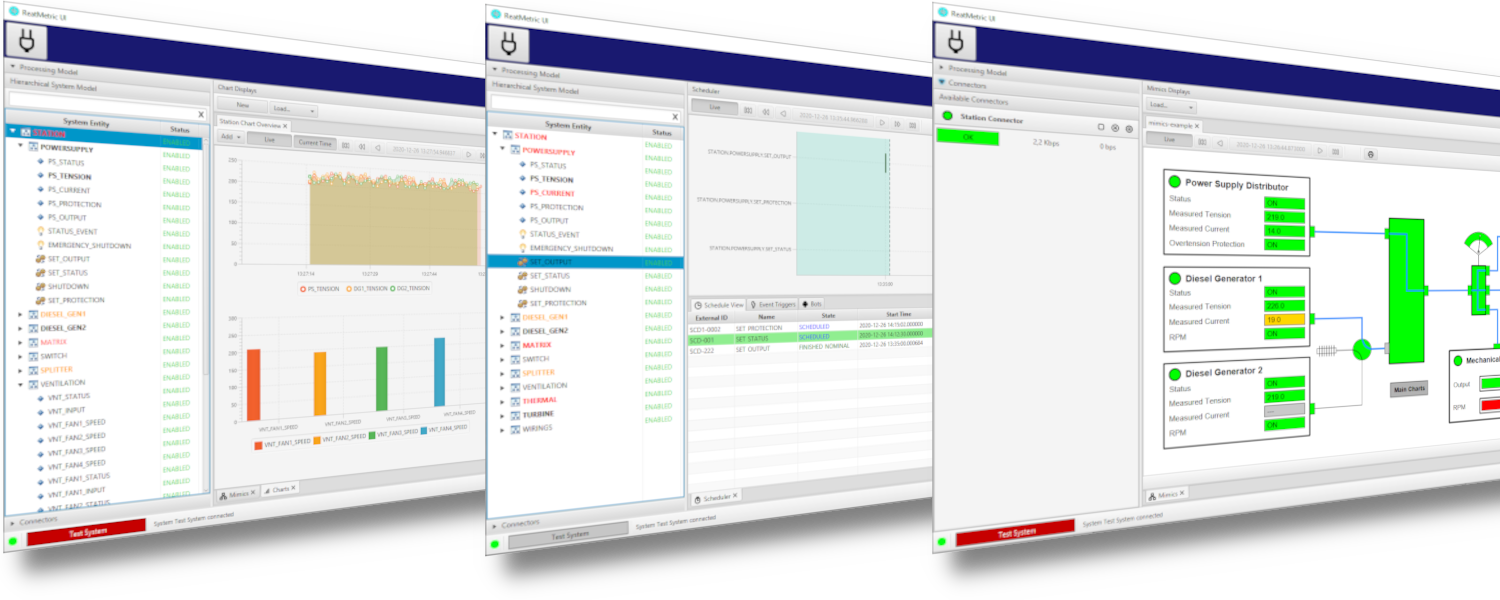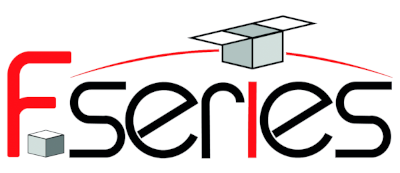ReatMetric is a well-documented Java-based software infrastructure for the implementation of Monitoring & Control (M&C) systems.
The system concepts, design, configuration and usage are described in the documentation.
As of version 1.1.0, released on 22 July 2024, the development of ReatMetric is considered completed and no further updates will be released.
ReatMetric is based on a very limited set of dependencies:
- openJFX: for the graphical user interface of the ui module;
- ControlsFX: advanced UI controls for the ui module;
- eu.dariolucia.jfx.timeline: providing support for schedule rendering in the ui module;
- Apache Derby: providing the storage backend of the persist module;
- JAXB: for the configuration of all modules;
- Groovy: for the Groovy language support in the processing and automation modules (best choice);
- GraalVM: for the Javascript language support in the automation modules;
- Jython: for the Python language support in the automation modules;
- eu.dariolucia.ccsds: providing support for SLE/TM/TC/PUS handling of the spacecraft driver;
- Json Path: for the parsing of JSON objects and files;
- SNMP4J: for the support of SNMP in the snmp module;
- PostgreSQL: providing the storage backend of the persist.timescale module;
- TimescaleDB: providing the storage backend extension for the persist.timescale module;
Including also the indirect dependencies, a typical ReatMetric backend deployment (i.e. without UI) is composed by 40 Jars, 16 from ReatMetric and 24 from external dependencies, for a total of 16.5 MB. This size can be further reduced depending on the needs, since some drivers and related dependencies might not be needed.
If you want to quickly try ReatMetric out, use the following approach:
- Build the complete tree with maven: mvn clean install
- Create a folder called 'reatmetric' inside your home folder and decompress there the configuration zip inside eu.dariolucia.reatmetric.ui.test/src/main/resources
- Update the configuration data as appropriate. There is no need to change the processing definition data
- Go inside eu.dariolucia.reatmetric.ui.test/target and run the following line (assuming Java is in your path)
(Windows)
java --module-path="deps" -Dreatmetric.core.config=<path to ReatMetric>\configuration.xml --add-exports javafx.base/com.sun.javafx.event=org.controlsfx.controls -m eu.dariolucia.reatmetric.ui/eu.dariolucia.reatmetric.ui.ReatmetricUI
(Linux)
java --module-path="deps" -Dreatmetric.core.config=<path to ReatMetric>/configuration.xml --add-exports javafx.base/com.sun.javafx.event=org.controlsfx.controls -m eu.dariolucia.reatmetric.ui/eu.dariolucia.reatmetric.ui.ReatmetricUI
If you want to try ReatMetric using a client-server deployment, I suggest the following approach:
- Build the complete tree with maven: mvn clean install
- Create a folder called 'reatmetric' inside your home folder and decompress there the configuration zip inside eu.dariolucia.reatmetric.ui.test/src/main/resources
- Update the configuration data as appropriate. There is no need to change the processing definition data
- Go inside eu.dariolucia.reatmetric.remoting.test/target and run the following line (assuming Java is in your path)
(Windows)
java --module-path="deps" -Dreatmetric.core.config=<path to ReatMetric>\configuration.xml -m eu.dariolucia.reatmetric.remoting/eu.dariolucia.reatmetric.remoting.ReatmetricRemotingServer 19000
(Linux)
java --module-path="deps" -Dreatmetric.core.config=<path to ReatMetric>/configuration.xml -m eu.dariolucia.reatmetric.remoting/eu.dariolucia.reatmetric.remoting.ReatmetricRemotingServer 19000
- Create a folder called 'reatmetric_remoting' inside your home folder
- Inside the folder created in the previous step, create a remoting configuration, so that the UI can connect
- Go inside eu.dariolucia.reatmetric.ui.remoting/target and run the following line (assuming Java is in your path)
(Windows)
java --module-path="deps" -Djava.rmi.server.hostname=<server IP to use for local connections> -Dreatmetric.remoting.connector.config=<path to ReatMetric remoting>\configuration.xml --add-exports javafx.base/com.sun.javafx.event=org.controlsfx.controls -m eu.dariolucia.reatmetric.ui/eu.dariolucia.reatmetric.ui.ReatmetricUI
(Linux)
java --module-path="deps" -Djava.rmi.server.hostname=<server IP to use for local connections> -Dreatmetric.remoting.connector.config=<path to ReatMetric remoting>/configuration.xml --add-exports javafx.base/com.sun.javafx.event=org.controlsfx.controls -m eu.dariolucia.reatmetric.ui/eu.dariolucia.reatmetric.ui.ReatmetricUI
Example of remoting configuration:
<ns1:connectors xmlns:ns1="http:https://dariolucia.eu/reatmetric/remoting/connector/configuration">
<connector local-name="Test System" remote-name="Test System" host="192.168.2.106" port="19000" />
</ns1:connectors>
A special mention goes to Theresa Köster from the University of Gießen, who evaluated ReatMetric (among other tools) against the Flying Laptop operational simulator. With her contributions, ideas and suggestions, she helped greatly to verify the TM/TC implementation compatibility of ReatMetric against a real, operational system.
Special thanks go to the F-Series team at Airbus DS, Germany, which is using ReatMetric and the underlying CCSDS software library as a testing system for the development support and verification of the F-Series core avionics FLP2 and FLC. The team contributed to resolve some issues in the implementation of the protocols and provided valuable feedback for the improvement of the usability of the ReatMetric system.




